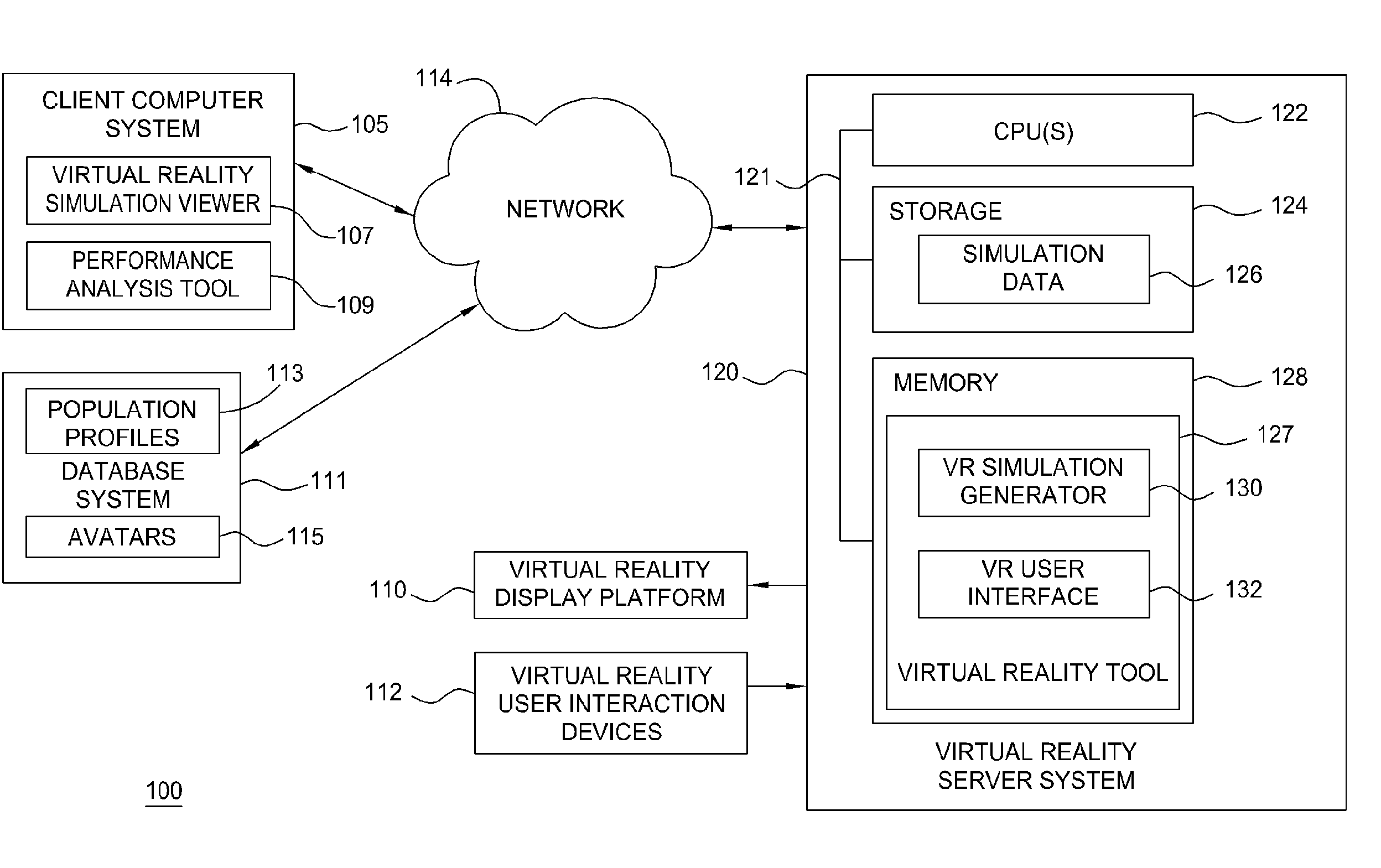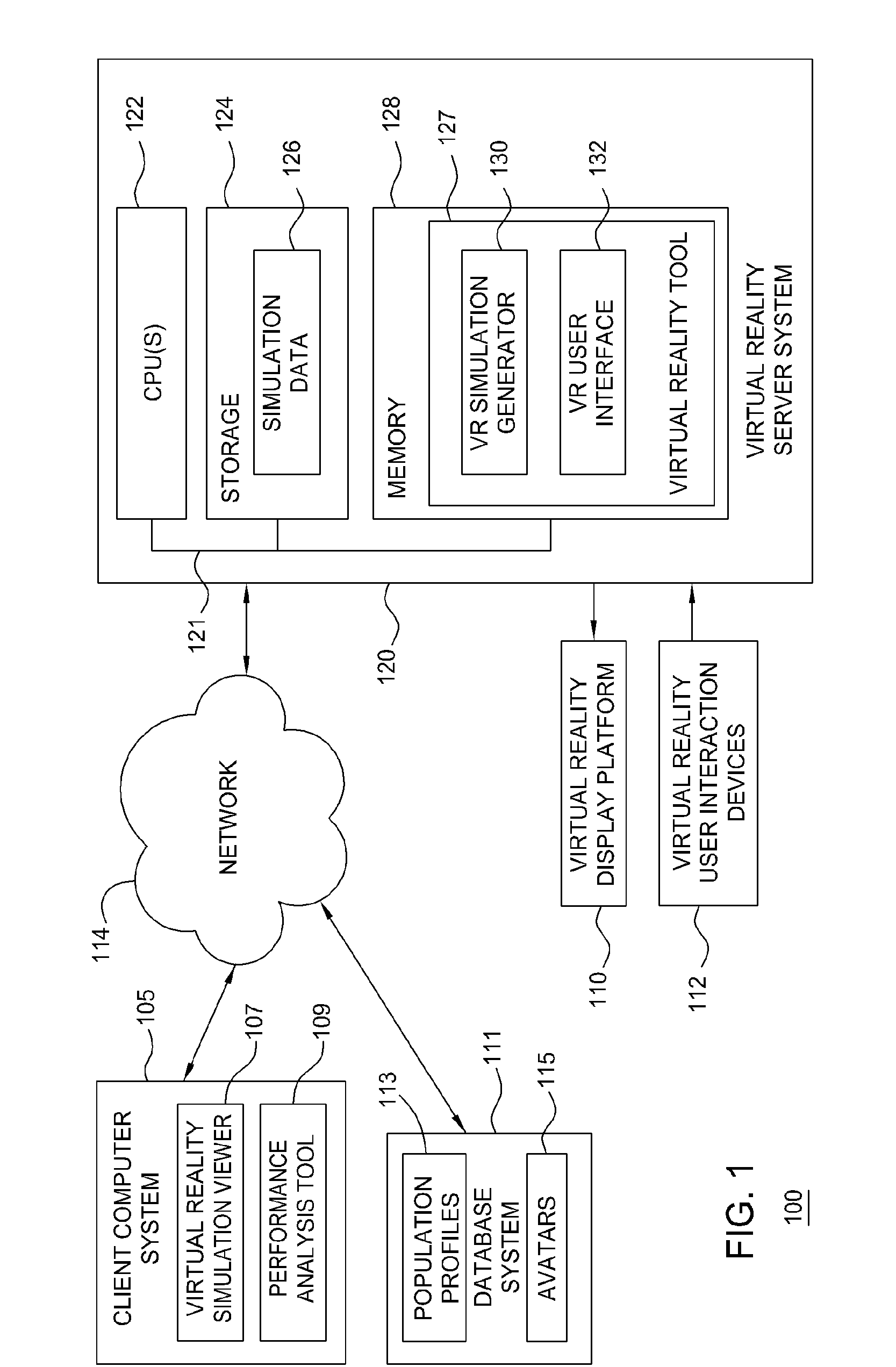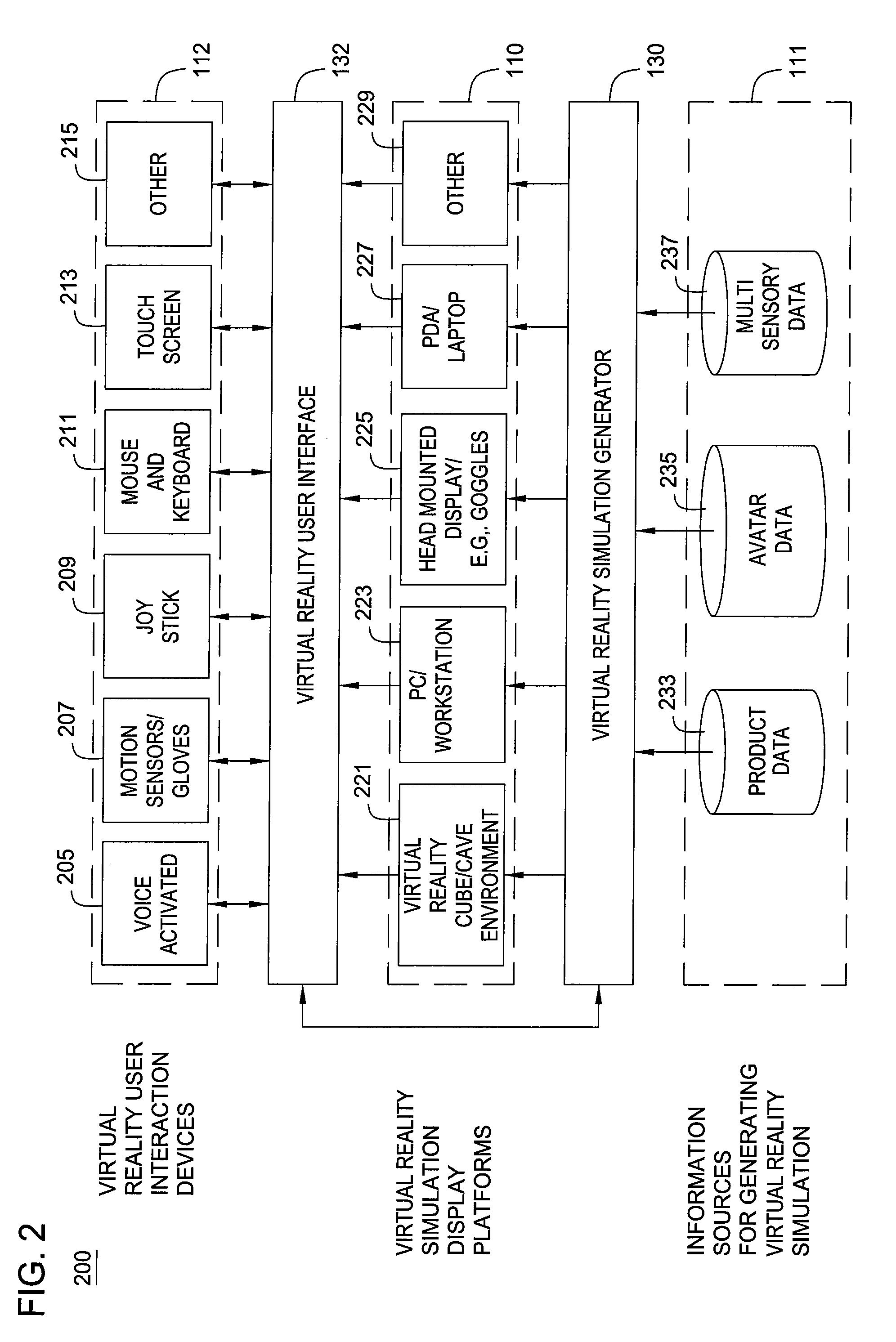Tools for product development comprising collections of avatars and virtual reality business models for avatar use
a technology of avatars and products, applied in the field of virtual reality simulations, can solve problems such as inability to analyze easily, product failure functionally, and aggravate the difficulty of finding a satisfactory configuration, and achieve the effect of facilitating market research
- Summary
- Abstract
- Description
- Claims
- Application Information
AI Technical Summary
Benefits of technology
Problems solved by technology
Method used
Image
Examples
Embodiment Construction
[0023]Embodiments of the invention provide virtual reality tools used for product development comprising collections of avatars and business models for using virtual reality avatars within a virtual reality simulation. Using a collection of avatars can greatly reduce both product design costs and time-to-market cycles, as well as improve profitability. Further, virtual reality avatars may be used to assist consumers with product sizing and selection, decisions. Embodiments of the invention may allow a product manufacturer to optimize a selection of configurations and sizes for a given product for a given target population
[0024]As is known, a variety of computational tools are available to create virtual reality simulations. For example, U.S. Pat. No. 6,810,300 “Method of Designing a Product Worn on a Body in a Virtual Environment” issued to Woltman, et al. on Oct. 26, 2004, and incorporated by reference herein in its entirety, describes a computer-based virtual product development a...
PUM
 Login to View More
Login to View More Abstract
Description
Claims
Application Information
 Login to View More
Login to View More - R&D
- Intellectual Property
- Life Sciences
- Materials
- Tech Scout
- Unparalleled Data Quality
- Higher Quality Content
- 60% Fewer Hallucinations
Browse by: Latest US Patents, China's latest patents, Technical Efficacy Thesaurus, Application Domain, Technology Topic, Popular Technical Reports.
© 2025 PatSnap. All rights reserved.Legal|Privacy policy|Modern Slavery Act Transparency Statement|Sitemap|About US| Contact US: help@patsnap.com



